Bukhara, Uzbekistan – June 2014
Finally, we are back on track. We apologize for the delay in our blogs, but a three-and-a-half-month trip to Thailand, Myanmar, Laos and Singapore, places where we may not want to drive our expedition truck, in combination with a problem with the plug-in that was transferring our blogs to Facebook and Twitter, well —let’s just call it computer glitch. In any case, if you’ve been following us, we are back, and the amazing city of Bukhara was our next stop.
Leaving Kiva, our visa actually gave us permission to explore the area around Beruni and Bostan to visit ancient ruins like Toprak Kale, but with temperatures hovering around the 110°F mark during the day and not a whole lot cooler during the night, comfortable camping might not be fun. Part of the restrictions of our Uzbekistan visa did allow us to wild-camp two out of every three days. All this was factored into the reality that we now had a drop-dead date on which we had to cross the border into China to meet our guide. With these constrictions and considerations, and still two and a half countries to cross, we headed straight through the Kyzilkum Desert to Bukhara.
After a little bit of searching online, we found a wonderful hotel in the center of town called the Lyabi House. Safe guarded parking was located just across the main park. This charming 19th century traditional Bukhara home was decorated with beautiful tile and antique articles. On the veranda overlooking a center patio we enjoyed a buffet breakfast. Our room was comfortable and the air conditioner worked. We were in heaven.
The region around Bukhara has been inhabited for at least five millennia. The city has existed for half that time. Located on the Silk Road, Bukhara has long served as a center of trade, scholarship, culture, and religion and when you look at the numerous mosques, madrassas, (schools), and amazing minarets, it’s no surprise that Bukhara is a World Heritage Site. Today Bukhara is more like a city museum with 140 archaeological monuments, but that did not detract from its history as we wandered through the narrow streets with people going about their normal daily routines.
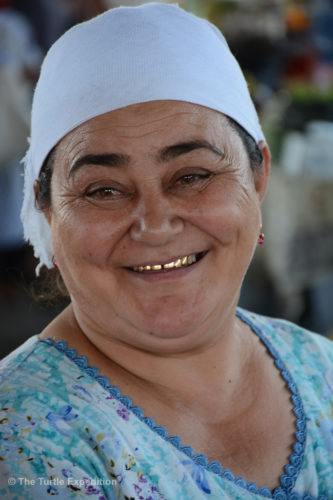
This lady with her “golden” smile selling produce in the market reminded us of our Russia trip in 1996. During Soviet times gold teeth were very popular.
The legends that surround Bukhara can leave your mouth open in astonishment. The massive fortress called the Ark is perhaps the oldest building in Bukhara. By 500 A.D. it was already the residence of local rulers. The creator of the original Ark, as legend has it, was a young man named Siyavusha. He fell in love with the daughter of a local ruler. The girl’s father agreed to permit them to marry provided that Siyavusha would first build a palace on the area “bounded by a bull’s skin”, obviously intended to be an impossible task. But the young man cut the bull skin into narrow strips, connected the ends and inside this boundary built the palace and presumably married his sweetheart. Throughout history the Ark was destroyed and rebuilt many times after invaders like Genghis Khan sacked it and the Red Army destroyed it during the Russian Civil War. Portions of the walls, some as high as 66 ft., (20 m), are still being restored.
Another example of the amazing architecture in Bukhara is the Kalyan, “The Great Minaret”, also known as the “Tower of Death”. Legends tell us that thousands of criminals were executed by being thrown off the top. The tower is 149 ft. high, (45 meters), and was built in 1127 by Mohammad Arslan Khan. When Genghis Khan invaded Bukhara, he gazed up at the Kalyan Minaret in wonder, and in a rare gesture of humility, he bowed at the foot of The Great Minaret and ordered it to be spared in the ensuing orgy of destruction. Being an important stop on the Silk Road, beacons in its tower created a lighthouse to guide lonely trade caravans through the desperate wastes of the Kyzylkum Desert.
Of all the artisan crafts that are practiced in Uzbekistan, ceramic pottery is perhaps one of the most delicate and refined. We did see many beautiful examples in the market that tempted us, even as difficult as they would be to pack for our journey ahead. We also knew that on our way east, we would stop in the town of Ghijduyan where the workshop of one of the more famous potters was located, and we always like to buy souvenirs right from the artist.
As you look at the pictures in this blog, you must be amazed that many of these structures are hundreds of years old. We spent almost a week in this famous gem along the Silk Road and never grew tired of the changing light on the magnificent buildings. Just before we left, we made sure to walk across the street from our hotel and touch the saddle of the statue of legendary comic and story teller Hoja Nasreddin. It would bring us good luck.
- The Lyabi House hotel was an ideal place to enjoy a fabulous buffet breakfast each morning before we wandered into town. Note the beautifully carved pillar to the left of Monika.
- The charming 19th century traditional Bukhara home was decorated with beautiful antique articles. The hand-painted ceramic tiles were amazing.
- The fortress called the Ark is the oldest structure in Bukhara. Its history dates back to 500 AD.
- The mighty fortress walls of the Ark are slowly being restored. Some sections are 66 ft., (20 m) high.
- Construction of some of the old homes made us wonder how they survived this long.
- It was Friday prayer time at the Bolo Hauz Mosque. Built in 1712, its 39-foot, (12 meter), iwan still stands and is one of the highest, most graceful and most beautifully decorated in Central Asia.
- The Nadir Divan-Begi Madrasah (religious school) faces a quiet pond in the center of the Old Town. Built in 1622, the entrance portal has depictions of 2 phoenix birds, 2 misshapen white deer and a “man-in-the-sun” face.
- Poi Kalyan, which means “The Foot of the Great”, is an Islamic religious complex located around the Kalyan minaret. Zoom into the next photo to see the amazing tile work.
- The Kalyan Minaret is also called the “Tower of Death”. Thousands of criminals were executed by being thrown off the top. Even Genghis Khan spared this minaret when he sacked the city.
- The Mir-i-Arab Madrasasah is considered one of the most interesting monuments of Bukhara. Its décor includes different stone mosaics of exquisite work with geometric, vegetative and calligraphic writings and patterns.
- We were constantly amazed by the intricate tile mosaics used to decorate these religious schools and minarets.
- The elegant arches always seemed to frame another picture. With the changing light these ancient cities are a photographer’s dream.
- The statue of Hoja Nasreddin on his mule is a famous photo-op in Bukhara. This legendary comic, character, philosopher from Turkey is famous throughout Asia for his jokes and wit. It is said that touching his saddle will bring you good luck, so we did.
- What photographer could pass up the opportunity to take pictures three beautiful girls who were happy to pose?
- We were tempted by the many beautiful hand-painted ceramics but the difficulty of transporting those over the rough roads that lie ahead made it impractical.
- Wandering through the open market outside of the city center, we had no problem stocking up on interesting foods for the next leg of our journey.
- Part of the fun of taking pictures of the people we meet in markets is being able to show them on a digital camera. These men and women loved to have their picture taken.
- An important branch of metal-working in Uzbekistan is the art of knife-making, and Sayfullo Ikraov is a master. His knives are world famous.
- Who are the people of Uzbekistan? Not to our surprise, they turned out to be human beings just like us, proving once again that our hearts beat the same.



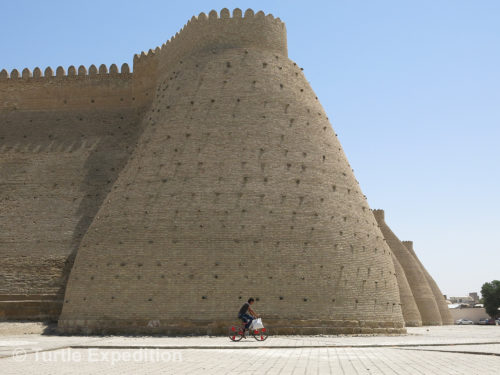
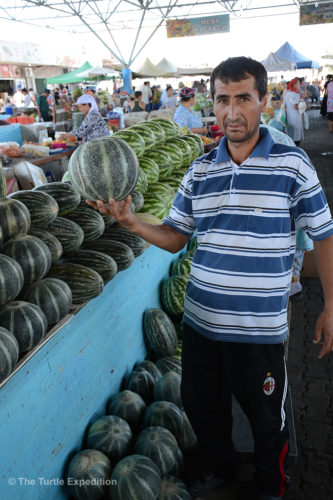
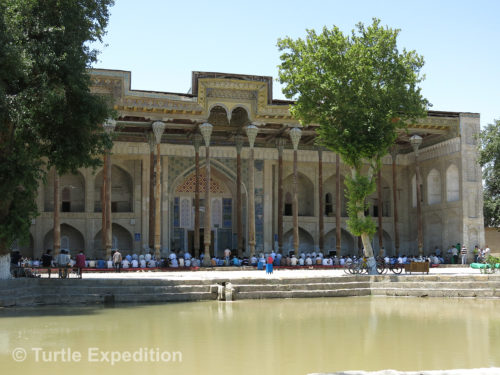
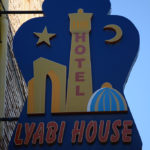
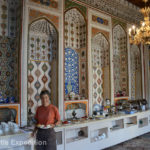
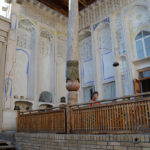
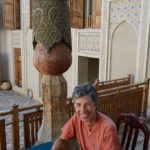
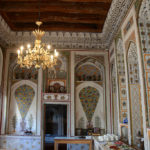
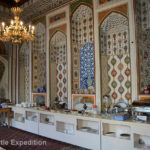
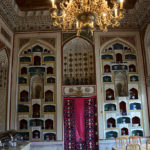
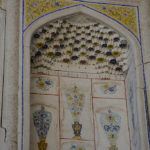
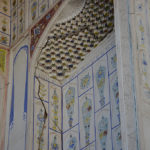
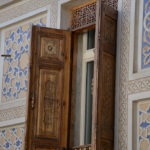
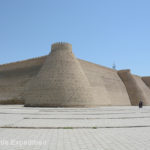
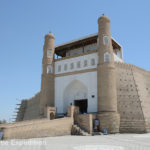
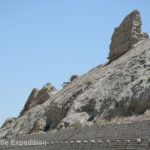
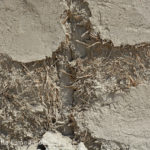
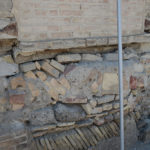
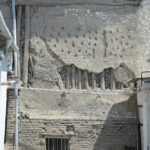
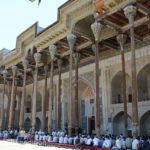
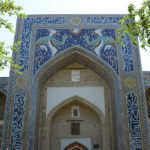
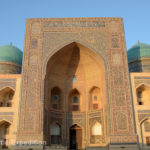
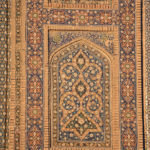
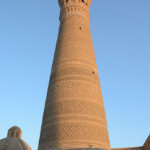
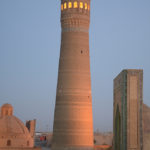
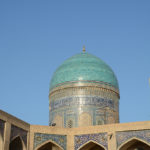
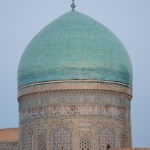
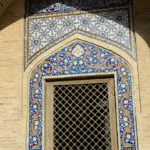
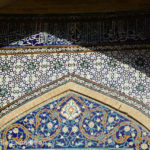
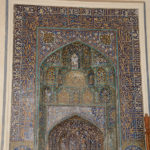
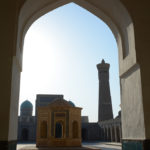
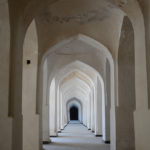
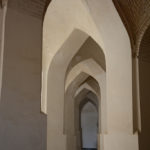
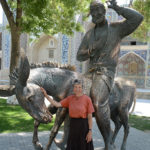
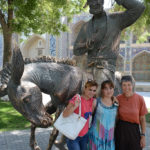
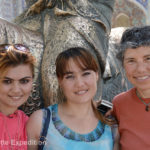


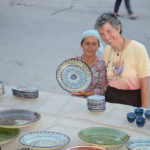


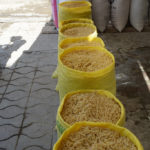
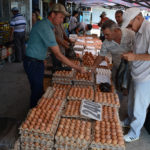
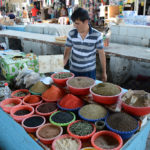

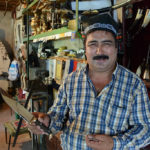

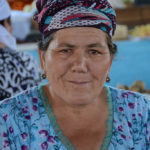


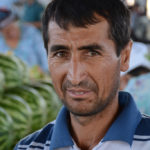





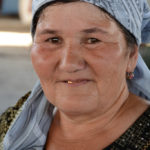







Leave a Comment